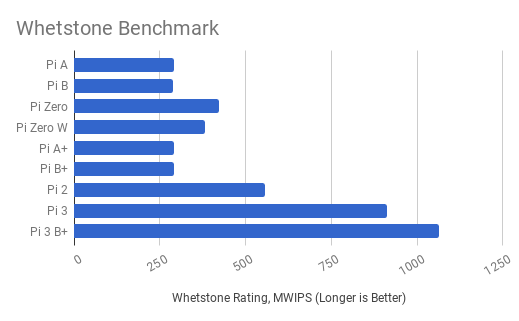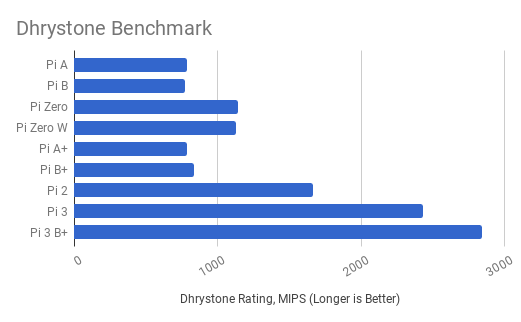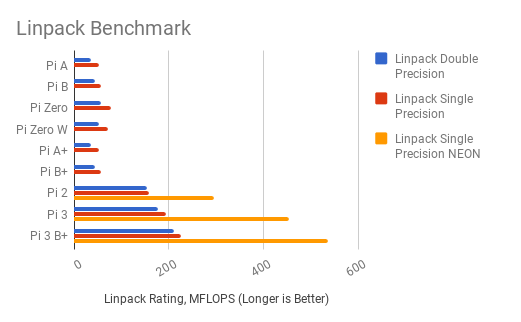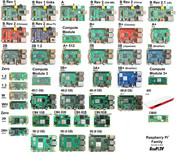The Broadcom portfolio
| SOC |  | Speed | GPU | GPU Speed | GPU SDK SPECS | APPLICATION |
|---|---|---|---|---|---|---|
| BCM21553 | Single-core ARM11 | 600 MHz | Single-core VideoCore 4 | 250 MHz | OpenGL ES 1.1, OpenGL ES 2.0, hardware-accelerated OpenVG 1.1, Open EGL, OpenMAX | Smartphones: Samsung Galaxy Y, Samsung Wave Y, Samsung Galaxy Mini (GT-S5570i), Samsung Galaxy Ace (models 5830i/c/m and 5839i), Vodafone Smart 2 (Alcatel TCT V860) |
| BCM2835 | Single-core ARM11 | 700 MHz | Single-core VideoCore 4 | 250 MHz | OpenGL ES 1.1, OpenGL ES 2.0, hardware-accelerated OpenVG 1.1, Open EGL, OpenMAX | SBC: Raspberry Pi A/B, A+/B+, Zero/Zero W/Zero WH, Odroid-W Mediaplayer: Roku 2 HD/XD/XS |
| BCM2836 | Quad-core ARM Cortex-A7 | 900 MHz | Quad-core VideoCore 4 | 250 MHz | OpenGL ES 1.1, OpenGL ES 2.0, hardware-accelerated OpenVG 1.1, Open EGL, OpenMAX | SBC: Raspberry Pi 2 Model B 1.1 |
| BCM23550 | Quad-core ARM Cortex-A7 | 1200 MHz | Single-core VideoCore 4 | 300 MHz | OpenGL ES 1.1, OpenGL ES 2.0, hardware-accelerated OpenVG 1.1, Open EGL, OpenMAX | Smartphones: HTC Desire 601 Dual SIM, XOLO Opus-HD, Samsung Galaxy Grand Neo |
| BCM2837 | Quad-core ARM Cortex-A53 | 1200 MHz | Quad-core VideoCore 4 | 400 MHz | OpenGL ES 1.1, OpenGL ES 2.0, hardware-accelerated OpenVG 1.1, Open EGL, OpenMAX | SBC: Raspberry Pi 2 Model B 1.2 (downclocked to 1.1 speeds), Raspberry Pi 3 Model B |
| BCM2837B | Quad-core ARM Cortex-A53 | 1400 MHz | Quad-core VideoCore 4 | 400 MHz | OpenGL ES 1.1, OpenGL ES 2.0, hardware-accelerated OpenVG 1.1, Open EGL, OpenMAX | SBC: Raspberry Pi 2 Model B 1.2 (downclocked to 1.1 speeds), Raspberry Pi 3 Model A+/B+ |
| BCM2710A | Quad-core ARM Cortex-A53 | 1000 MHz | Quad-core VideoCore 4 | 400 MHz | OpenGL ES 1.1, OpenGL ES 2.0, hardware-accelerated OpenVG 1.1, Open EGL, OpenMAX | SBC: Zero 2/Zero 2W/Zero 2WH |
| BCM28150 | Dual-core ARM Cortex-A9 | 1200 MHz | Single-core VideoCore 4 | 300 MHz | OpenGL ES 1.1, OpenGL ES 2.0, hardware-accelerated OpenVG 1.1, Open EGL, OpenMAX | 3G baseband processing |
| BCM28145/28155 | Dual-core ARM Cortex-A9 | 1200 MHz | Single-core VideoCore 4 | 300 MHz | OpenGL ES 1.1, OpenGL ES 2.0, hardware-accelerated OpenVG 1.1, Open EGL, OpenMAX | Smartphones: Samsung Galaxy SII Plus, Samsung Galaxy Grand, Samsung Galaxy Core Plus, Samsung Galaxy S Duos 2 Mediaplayers: Amazon Fire TV Stick |
| BCM725x | Broadcom Brahma-B15 | 742 MHz | Quad-core ARM Mali-400 MP2 | - | OpenGL ES 1.1, OpenGL ES 2.0, OpenVG 1.1 | Mediaplayer: Smartlabs SML-482 HEVC Hybrid |
| BCM2711 | Quad-core ARM Cortex-A72 | 1500/1800 MHz | Quad-core VideoCore 6 | 500 MHz | OpenGL ES 3.0, OpenGL ES 3.2 (partially) and Vulkan 1.0 | SBC: Raspberry Pi 4 Model B/Raspberry Pi 400/Raspberry Compute Module CM4 (1800 MHz after update to Bullseye or later) |
| BCM2712 | Quad-core ARM Cortex-A76 | 2400 MHz | Quad-core VideoCore 7 | 800 MHz | OpenGL ES 3.1, OpenGL ES 3.2 (partially) and Vulkan 1.2 | SBC: Raspberry Pi 5 Model B/Raspberry Pi 500/Raspberry Compute Module CM5 |












